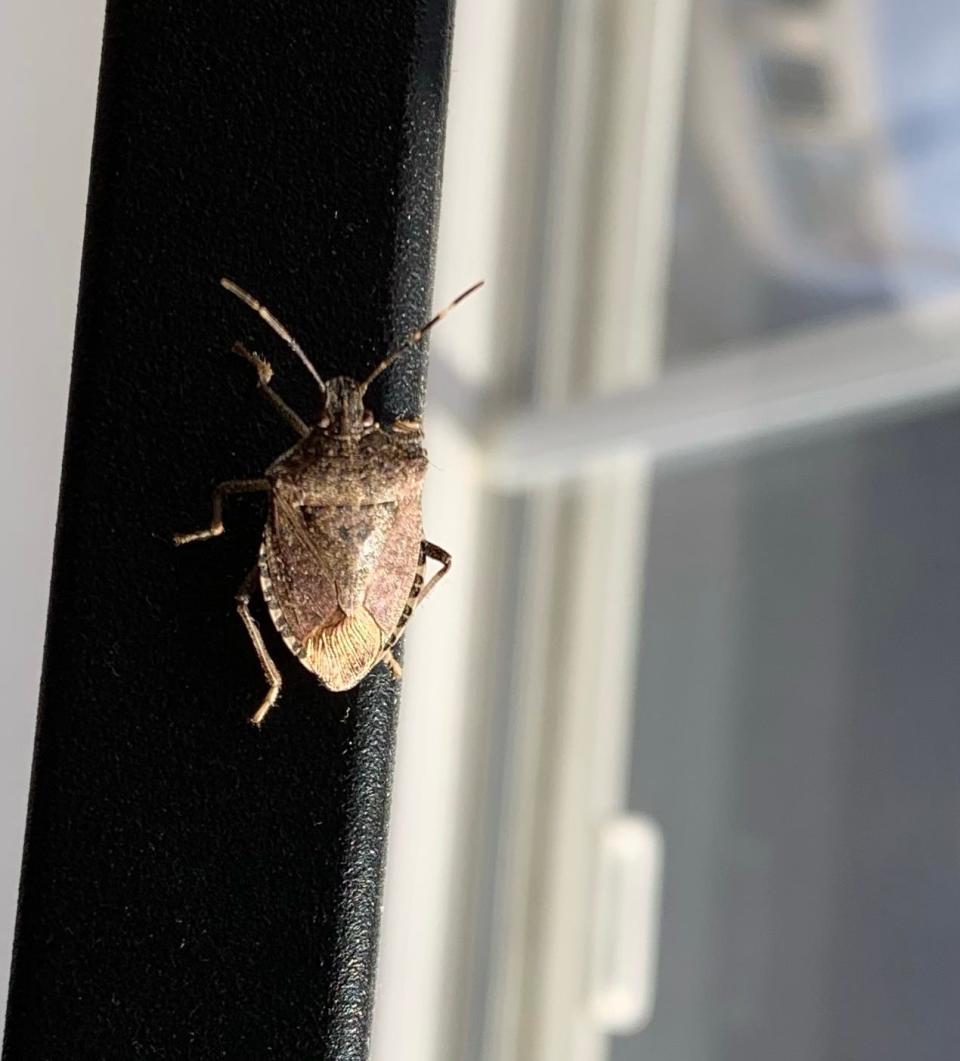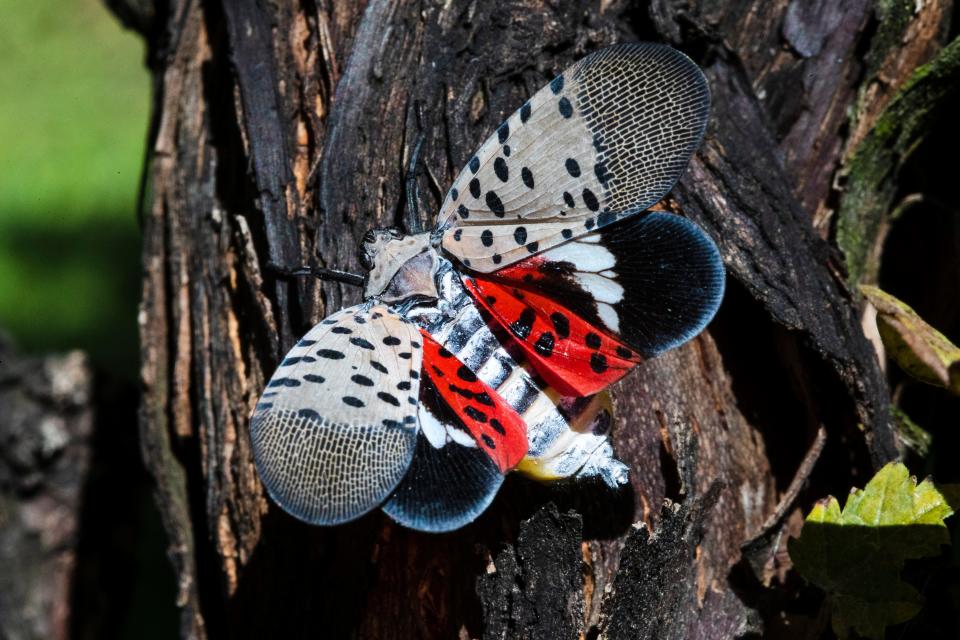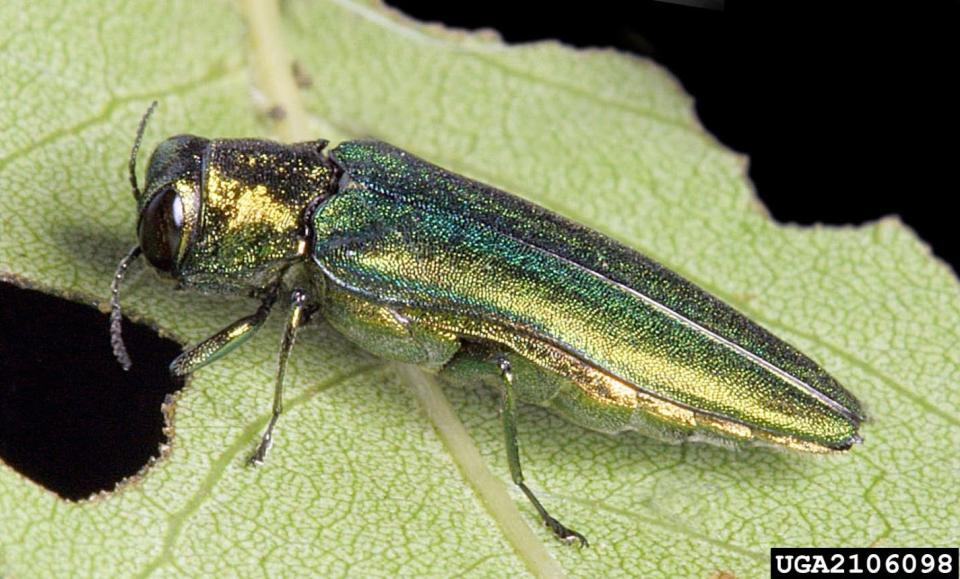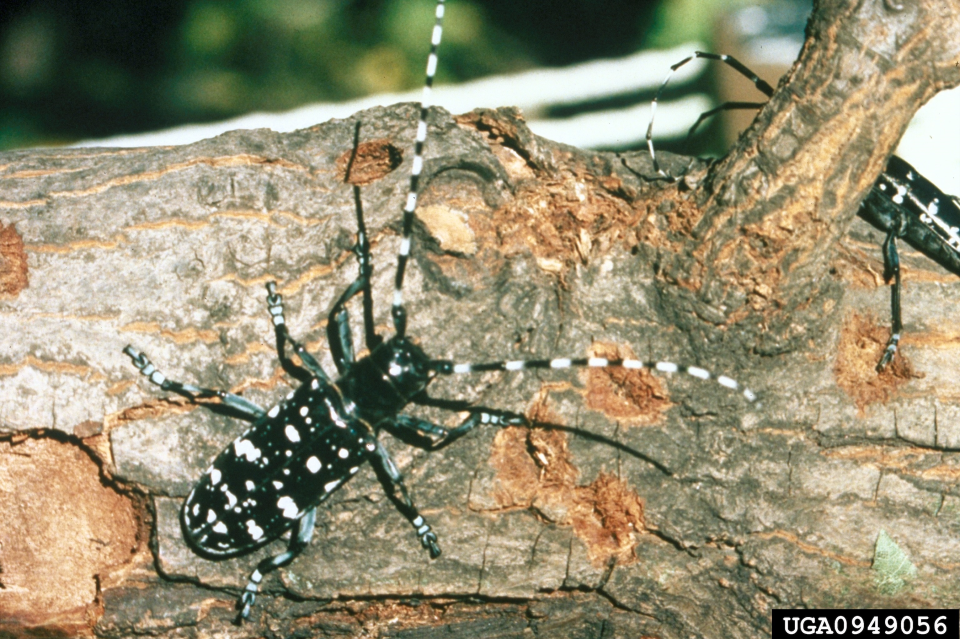Finding bugs in your home? Here's which ones are invasive and why you should kill them
Warmer weather contains the promise of backyard games, a dip in the lake, and insects that may make their way into your home. Some of those invaders present a risk for the environment.
Invasive insects can and should be killed, said Megan Abraham, Indiana Department of Natural Resources entomology division director and state entomologist.
"They're not native to our environment, so you should not feel too bad about killing them," Abraham said. "They don't have any natural enemies."
FOR SUBSCRIBERS: IU Health promised to freeze prices, then added fees to Bloomington patients' bills
Among the insects the Indiana Department of Natural Resources is keeping a close eye on are the spotted lanternfly, emerald ash borer or Asian longhorned beetle. Any sightings should be reported by calling 866-663-9684 or emailing DEPP@dnr.in.gov. Pictures are appreciated.
Read on to learn more about invasive insects that may be in your yard:
Brown marmorated stink bugs are invasive
First found in Indiana in 2010, this now-commonly seen pest is known for its persistent occurrences in homes and distinctive cilantro smell.
There are a lot of these bugs so they do not need to be reported.

The DNR recommends killing stink bugs by drowning. One method is to vacuum the bugs and empty them into a bucket of soapy water. Another way is to place a bowl of soapy water underneath a desk lamp. The stink bug will be attracted to the light and eventually fall into the water.
While this bug doesn't bite, it feeds on and damages fruits and vegetables, making them unsellable. The insect creates an issue for orchards and farms since it pierces fruits and feeds on soybeans and corn. The DNR said the stink bug has show signs of resistance to chemical control.
To stop these pests from getting inside your home, Abraham said seal cracks and gaps around windows, doors, vents and air conditioners and check your attic for entry points. Make sure all screens are without holes, she said, and keep doors and windows closed, if possible.
Spotted lanternflies
When this insect was found in Switzerland County, Indiana, in 2021, it set off alarm bells for public officials, farmers and concerned citizens across the country.
Spotted lanternfly: Asian insect known to kill native plants, trees found in Indiana
The chaos-causing spotted lanternfly is known for moving along railway lines and killing trees, grapevines and other plants.
If a lanternfly is found, Abraham said people should kill the bug, take a picture and immediately report it to the DNR. Egg masses should be scraped off, placed in a Ziplock plastic bag filled with hand sanitizer and thrown away.

Residents can help monitor for the spotted lanternfly by inspecting areas around them, especially near tree of heaven, a fast-growing invasive deciduous tree the spotted lanternfly prefers.
Infected trees may have an excess of tree sap oozing from holes or black, sooty-like mold near the base. The bug, which has difficulty flying, tends to sit at the base of the tree and is more active at dusk.
Lanternflies measure about 1 inch and are distinguishable by the vibrant colors and spots on the wings. The forewings, seen predominantly while not in flight, are gray with black spots. The hind wings are partly red with black spots as well as black and white. It has a yellowish body with black bands.
For subscribers: Seeking a primary-care doctor in Bloomington? Few taking new patients and the wait is long
The insect lays eggs on smooth surfaces of trees, rocks or railway posts. Brownish-yellow seed-like eggs covered in a whitish gray waxy layer are laid in several inch-long columns. The eggs eventually mature to look brownish and are described as looking like mud. Abraham said these egg masses often go undetected and are moved to different areas, expanding the infestation.
"It's really difficult to detect until they've actually caused a bit of a mess," she said. "That can be really hazardous."
Emerald ash borer
This bug is known to produce tunnels within trees when feeding on them. If left unchecked, these insects will kill branches and ultimately trees and will then spread to others. The emerald ash borer is aptly named since its tree of choice is ash.
These bugs should be killed and reported.
This insect can be identified by its cylindrical body and metallic green color. Under its green wings is a coppery red abdomen. It is about a 3/4 of an inch long.

This bug was first discovered in Indiana in 2004 and has since been found in all 92 counties. The quarantine placed on the state for the bug's detection has been lifted. However, the DNR asks people to be diligent to keep an eye out for it and buy local firewood instead of hauling from elsewhere.
Asian longhorned beetle
This bug has not been found in Indiana, but there are multiple active quarantine sites in the U.S. and Canada — the closest being Chicago and Cincinnati.
The Asian longhorned beetle should be killed and reported if found.

The beetle is about an inch long with a black body sprinkled with random white markings. Its antennas are long with white bands.
Female beetles will chew dozens of oval depressions in tree bark to lay their eggs. These areas are often located on the trunk and undersides of branches. Larva then will push out sawdust-like material, which could be seen piling on branches or at the base of the tree, as it diggings tunnels just below the bark. The adult beetles chew holes that are a quarter inch or larger to exit the tree and find its next host.
"People often don't associate the insect with the reason that trees might be dying in their neighborhood," Abraham said.
My Favorite Ride: Jim Schlick leaves a collection of much-loved Peugeots as his legacy
The beetle latches onto wood, so the DNR says firewood should not be carried for long distances. They also ask people to check the end of broken tree limbs for tunneling damage, a sign of this insect's infestation.
This bug is enough of an issue that the U.S. Department of Agriculture will treat the bug's infestation by destroying the affected trees, Abraham said. The beetle leeches onto hardwood trees, like ash, elm, birch, poplar and willow, but its favorite is maple.
"That kind of gives you an idea of the depth of destruction this kind of insect can cause if they're willing to cut down some trees to save a forest."
Cate Charron is an intern at The Herald-Times. You can reach her by email at ccharron@heraldt.com or on Twitter at @CateCharron.
This article originally appeared on The Herald-Times: Stink bugs and other species are invasive. Why you should kill them

